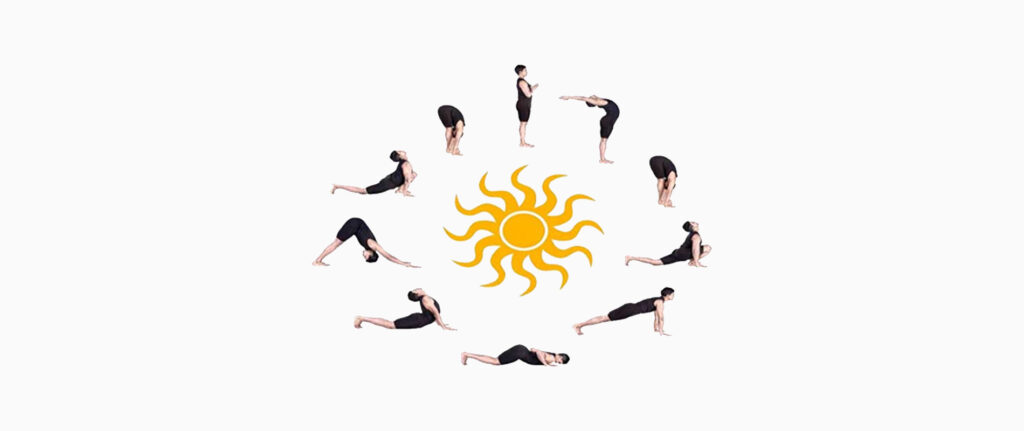“Yoga is like music. The rhythm of the body, the melody of the mind, and the harmony of the soul creates the symphony of life.”
As rightly said in the above quote, Yoga creates a harmony between the mind and the body and that is why it is given the name ‘Yoga’, which is derived from a Sanskrit word Yuj, which means ‘to unite’. The mind and body always work in co-ordination. When one gets angry thoughts, their body might feel hot and tense; in case of happy emotions, the body feels light and relaxed. Sometimes, we are unable to recognise certain emotions or thoughts that are running in our minds which of course have adverse effect on our body. Yoga helps us in understanding our emotions, thoughts, and more importantly it helps us in understanding our body. Although Yoga has a spiritual perspective, it is a great form of exercise, not just for your body but also for your mind!
5 Yoga practices to keep your mind energetic :
As per studies, 15 minutes of daily yoga practice increases the GABA levels, which is neurotransmitter and in charge for our good mood. Here are 5 fun Yoga practices which might help you in keeping the stress and anxiety levels at bay!
Suryanamaskar: Suryanamaskar literally translates to ‘salute to the sun’. Although in ancient times it was practiced during sun rise, you can practice it at any time of the day. Suryanamskar improves blood circulation, adds glow on the skin and other numerable effects on body. Psychologically, it helps in emotional regulation and concentration. In one of the researches, it was found that practice of suryanamaskar reduces built up tension and stress and increases concentration and promotes relaxation.
Suryanamskar consists of 12 asanas which are
- Pranamasana or the Prayer Pose.
- Hasta Uttanasana or the Raised Arms Pose.
- Hasta Padasana or the Standing Forward Bend Pose.
- Ashwa Sanchalanasana or the Lunge Pose.
- Chaturanga Dandasana or the Plank Pose.
- Ashtanga Namaskar or the Eight Limbed Pose
- Bhujangasana or the Cobra Pose.
- Adho Mukha Svanasana or the Downward Facing Dog.
- Ashwa Sanchalanasana or the High Lunge Pose.
- Hasta Padasana the Standing Forward Bend.
- Hasta Uttanasana or the Raised Arms Pose.
- Pranamasana or the Prayer Pose.

Anulom Vilom: It is a controlled breathing exercise, i.e., Pranayama. Anulom Vilom is an alternate nostril breathing exercise which helps in calming the mind. It makes us consciously focus on our breathing, which makes us stay in the present moment and be mindful about our body, thoughts and feelings. It is advised to be practiced on an empty stomach. One can do this exercise for a minute and then increase the time as per one’s comfort.
Bhramari: Bhramari, a pranayama technique got its name from Indian black bee- Bhramari, because its practice resembles the humming sound of a bee. The vibrations created by this exercise, work on calming the nerves around forehead. It is helpful in calming down anger, freeing oneself from agitation and frustration and inducing good sleep. It is important to note that Bhramari is to be practiced in sitting position only.
Bhastrika: Another pranayama technique, Bhastrika involves rapid and forceful inhalation and exhalation. This inhale and exhale is accompanied by a sound, this done to pump more oxygen and boost energy. Bhastrika energises the entire body and mind. It also calms the mind and helps in improving attention and concentration.
Yog nidra: Yog nidra is a form of dhyaan (mediation) in yoga. It is a guided meditation which is done at the end of a typical yoga session to calm the body from the asanas and pranayama. There are numerous studies that have showed that yog nidra decreases stress levels and takes us to a trance like state where the subconscious mind is activated. It is a guided meditation which relaxes the body part one by one and then focuses on the mind. A daily 15 minutes yog nidra practice helps in changing the perspective and being more grateful.
So start your yoga journey with these easy to do asana and pranayams and kick off those tensions and stress!
Please note that although the above asanas and pranayamas are safe to practice at home, it is advised to consult a professional in case of any health issue.









